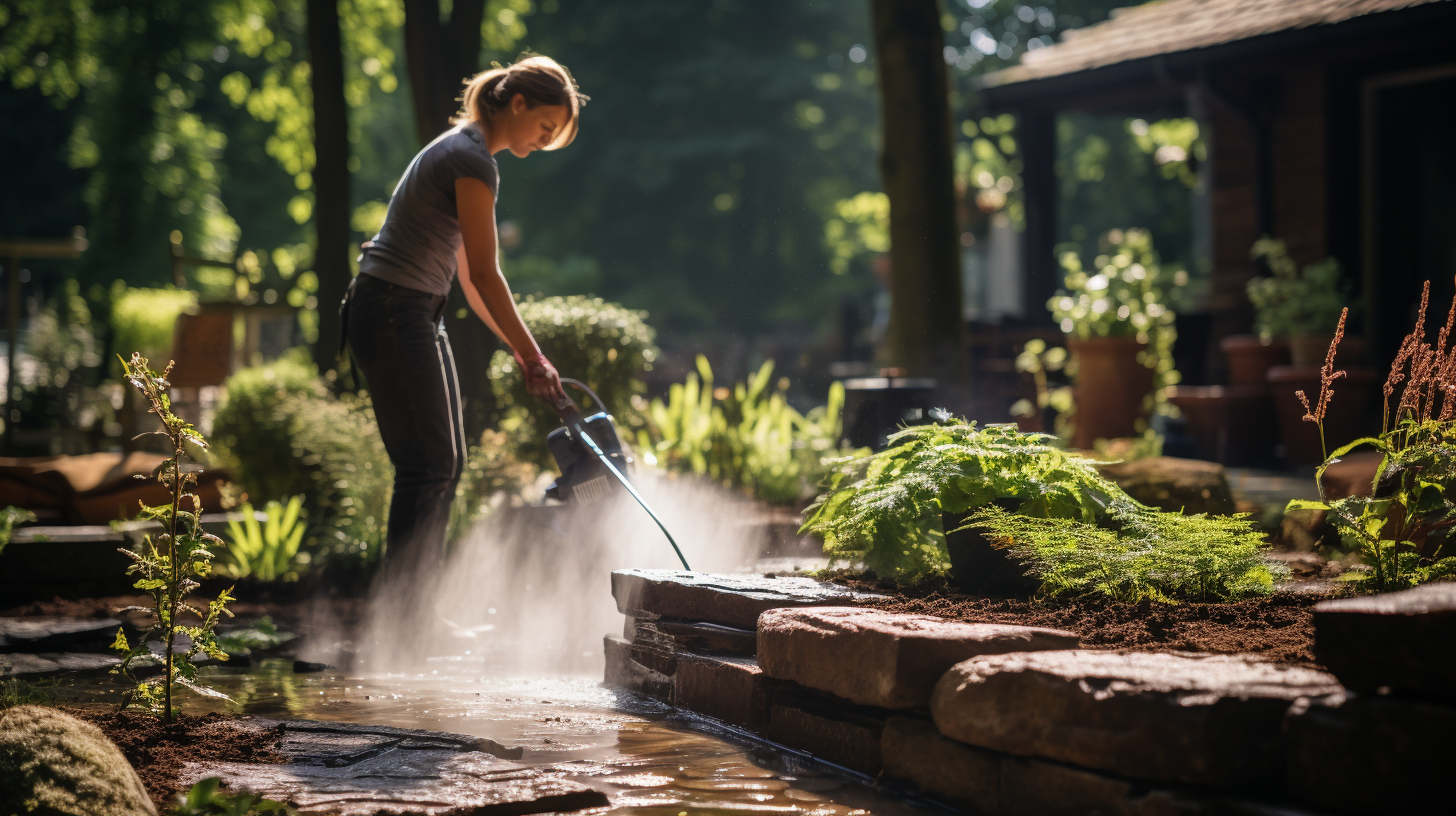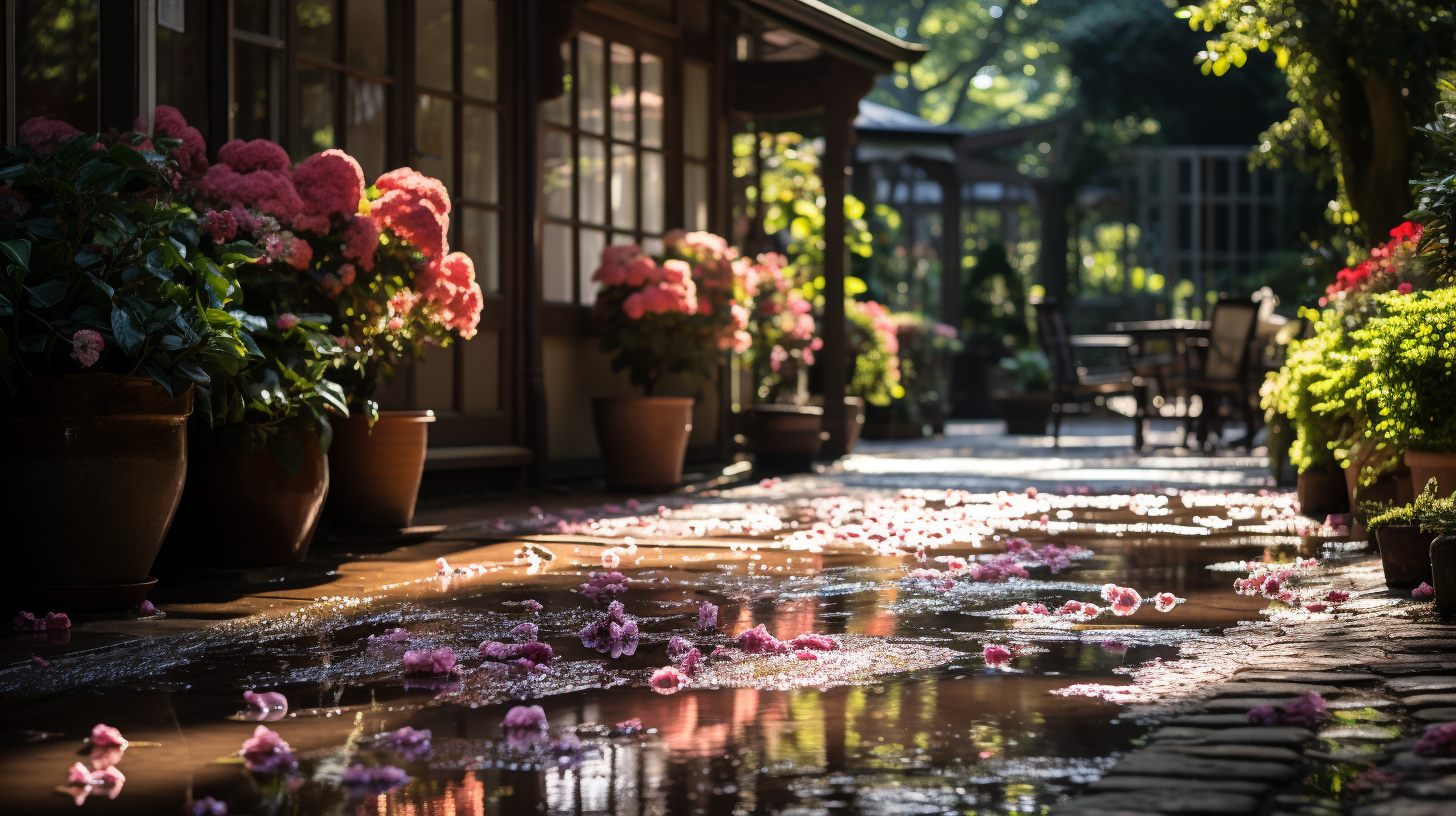Alternative Cleaning Methods
If you're still struggling to get your garden stones clean, a few more intensive methods may help:
Pressure Washing - Rent a heavy duty gas pressure washer with a wide fan nozzle to blast away stubborn dirt and stains. Take care around softer stones.
Sand Blasting - Professionally sand blasting etches away the outer stained layer while leaving a clean finish. Results look freshly cut but can be costly.
Flame Weeding - Passing a handheld propane torch flame briefly over the stone surface carbonizes and destroys organic growths like algae or moss. Use extreme caution.
Sealing - Applying a penetrating sealer after cleaning helps shield stones from future dirt, oils, mould and mildew stains. Reapply annually.
Whitewashing - For old, severely discoloured paving stones, a whitewash made of hydrated lime, salt and water can coat and renew the look of worn surfaces. Rinse immediately if applied to unintended areas.
Replacing Stones - Ultimately, stained or damaged decorative aggregates may need partial or full replacement to restore the appearance. Remove and dispose of old stones before relaying fresh, clean materials.
By tailoring your approach using the right methods and products for your specific garden stones, keeping them looking clean and bright doesn't have to be difficult. With a little seasonal attention, you can maintain beautiful hardscaping features despite weathering and organic growth. Test products and techniques in small areas first and always closely follow label directions when using commercial cleaners. Your efforts will be rewarded with renewed stones you can continue enjoying for years to come.







